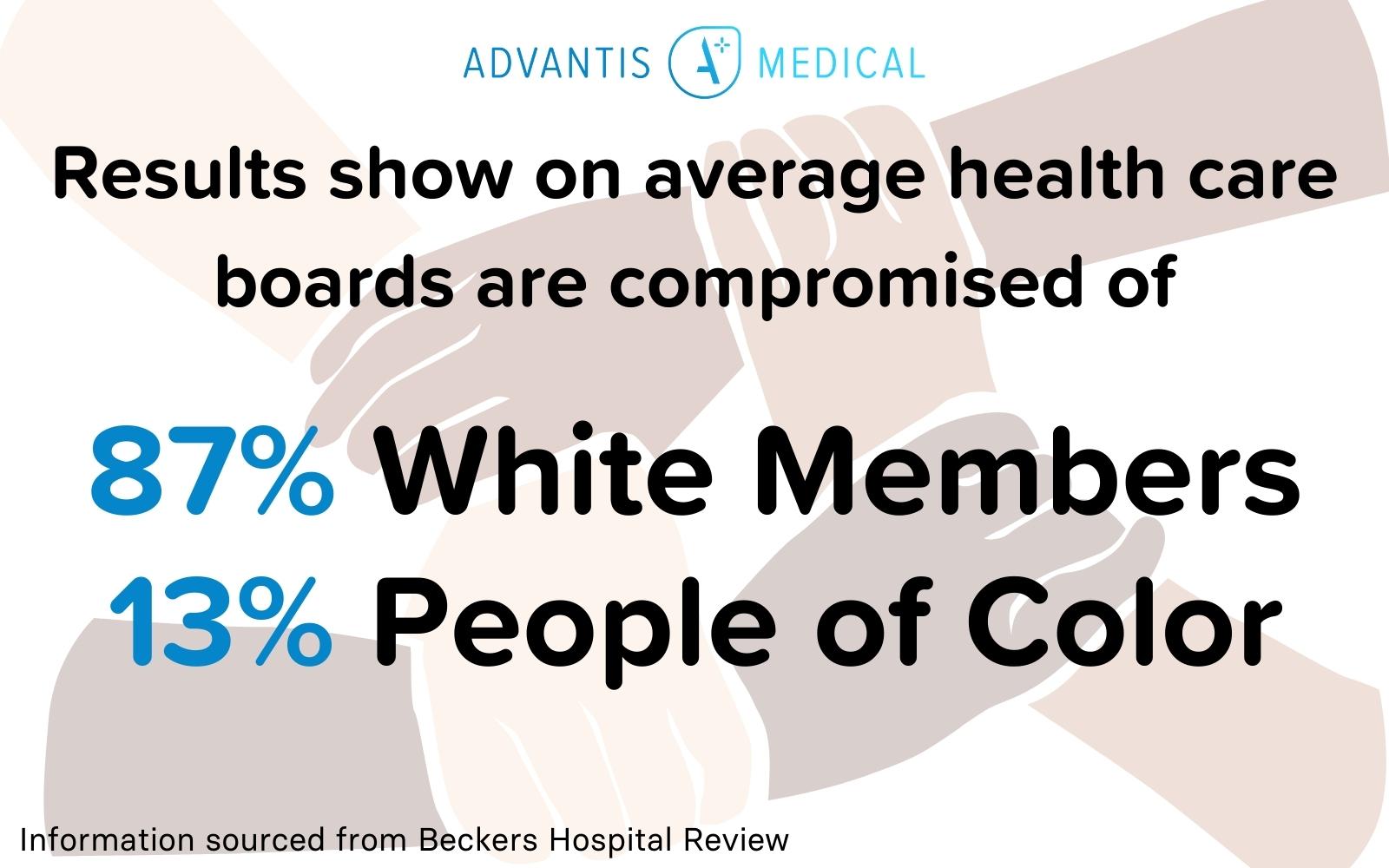
5 Ways to Improve Diversity in the Workplace & Healthcare
Systemic racism runs deep in the United States. It impacts just about every aspect of life for people who belong to minority groups, including quality of and access to healthcare. Lack of diversity in the healthcare settings has the power to do two things: decrease quality care for patients from minority groups and discourage people from minority groups from pursuing careers in health science.

As a result, it’s really important for organizations in the healthcare space to prioritize diversity, equity, and inclusion practices. Here are some ways you can work to improve diversity in your healthcare facility.
1. Prioritize diversity in leadership
Your leadership team should reflect the sort of diversity in the workplace you wish to see. If your c-suite consists of white, cis-gendered males, you should be asking yourself why. These circumstances are most often the result of systemic racism, which excludes candidates from diverse backgrounds. There are more than enough minority candidates to go around—you just have to commit to hiring diverse applicants.
2. Recruit from diverse environments
If you’re still not sure how to find and hire more diverse candidates, I highly suggest recruiting from historically black colleges and universities (HBCUs). Most of them have student populations that are much more diverse than predominantly white institutions, making it easy to hire Black, Latinx, and new graduates with other racial backgrounds.
Likewise, you can find diverse candidates through professional organizations that support minority groups. There are many you can partner with to find highly qualified candidates with diverse backgrounds, including:
- National Black Nurses Association
- National Association of Hispanic Nurses
- Asian American/Pacific Islander Nurses Association
- GLMA (formerly Gay & Lesbian Medical Association)
3. Take discrimination seriously
While hiring diverse candidates can help solve some of the issues of diversity in the workplace, you also have to retain those that you already have. Your efforts will be worthless if your workplace culture makes Black, Latinx, LGBTQ+, differently-abled, and people from other minority groups feel uncomfortable. Promoting acceptance and diversity in the workplace means also holding people accountable for microaggressions, racism, sexism, ableism, homophobia and other discriminatory behavior against minorities.
If you’re aware of any such behavior, you must address it immediately with consequences up to and including termination depending on the situation. You should always discuss the consequences with the person who experienced the discrimination to figure out what would make them most comfortable. No matter how hard it may be to part ways with a member of your team, coaching and counseling isn’t always enough to restore a healthy work environment after they’ve displayed this sort of behavior.
4. Support DEI initiatives
Diversity, equity, and inclusion (DEI) initiatives are more than just hiring diverse candidates. To be truly diverse, equitable, and inclusive requires cultivating a work environment where doctors, nurses, and other healthcare workers from all backgrounds feel accepted, supported, and comfortable.
The most successful DEI initiatives are rooted in data. After analyzing the demographics of your organization, you can set targets for different metrics. If you notice pay discrepancies or lack of opportunities for employees from diverse backgrounds, it’s your responsibility to fix those issues. This is especially important since Black women earn just 63 cents for every dollar that white men earn, representing the worst pay discrimination in the United States.
DEI initiatives also include mentoring and promotion opportunities that are accessible to employees from historically marginalized groups, using inclusive language, and conducting workshops to shed light on and disrupt biases. If you need more DEI ideas, a Human Resources Director is an excellent starting point to improve diversity in healthcare.
5. Stop making excuses
A recurring theme that results from systemic racism is that there aren’t candidates from diverse backgrounds with qualifications fit for leadership or highly technical roles, or that folks from certain backgrounds don’t value STEM careers. Worse yet are the experiences minority men and women like me endure in the workplace because of white colleagues who perpetuate or otherwise accept microaggressions, racism, homophobia, or ableism as normal.
These aren’t valid reasons for work environments that have a lack of diversity, nor are hostile work environments healthy for the people who work there. Everyone is responsible for prioritizing diversity in the workplace. Stop making excuses and start making changes. Your staff will thank you for it later!





.png)




